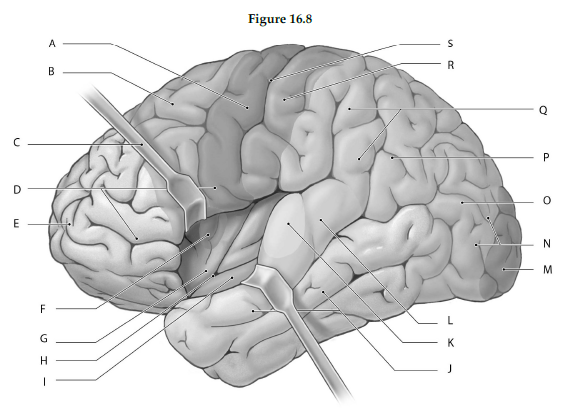Which of the following is true regarding the central and local mechanisms controlling gastric and intestinal activities?
A) The cephalic phase begins as food enters the stomach.
B) The gastric phase only lasts for minutes.
C) The cephalic phase includes the release of bile from the gallbladder.
D) The intestinal phase increases the stimulation of the stomach's stretch receptors.
E) The intestinal phase triggers mucus and bicarbonate to help protect the duodenum from arriving acid.
Answer: E
You might also like to view...
How many reactions take place during the Krebs cycle?
a) 4 b) 6 c) 8 d) 10 e) 12
Using the figure below, identify the labeled part.

1) Label A: ______________________________
2) Label B: ______________________________
3) Label C: ______________________________
4) Label D: ______________________________
5) Label E: ______________________________
6) Label F: ______________________________
7) Label G: ______________________________
8) Label H: ______________________________
9) Label I: ______________________________
10) Label J: ______________________________
11) Label K: ______________________________
12) Label L: ______________________________
13) Label M: ______________________________
14) Label N: ______________________________
15) Label O: ______________________________
16) Label P: ______________________________
17) Label Q: ______________________________
18) Label R: ______________________________
19) Label S: ______________________________
The primary erythrocyte buffer for carbonic acid changes
a. is phosphates. b. is histidine. c. is hemoglobin. d. is dipeptides. e. all of these.
Of the following muscle types, which one is usually under voluntary control?
A) skeletal muscle B) cardiac muscle C) smooth muscle D) None of the above.